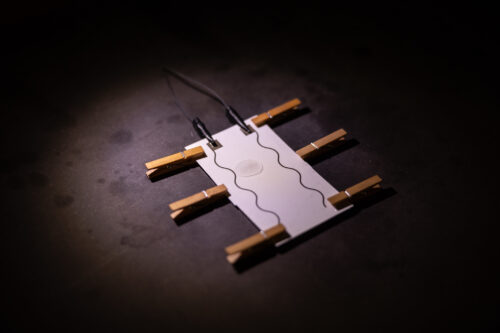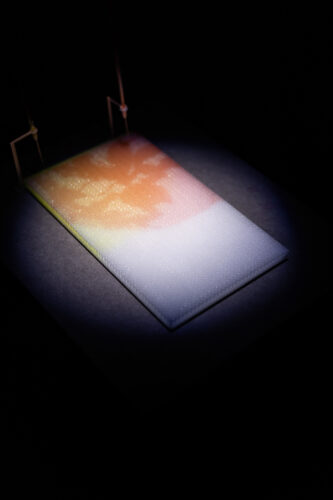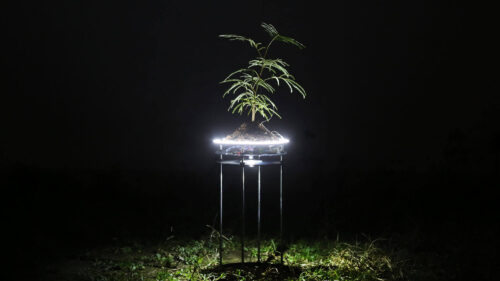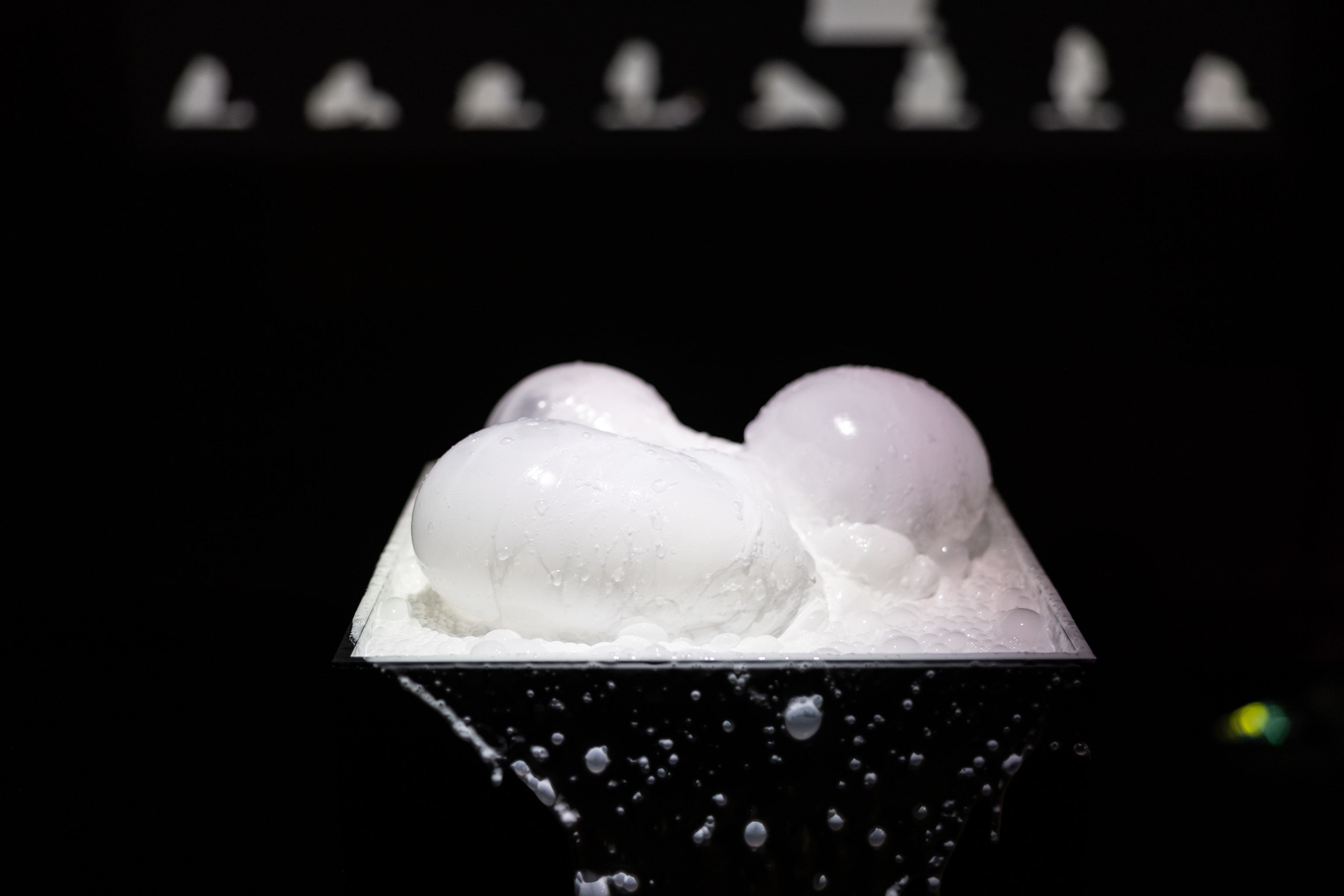This exhibition, Becoming Different, embarks on an exploration of the transformative aspects of object existence, drawing inspiration from Gilles Deleuze’s philosophy of “becoming”. It challenges the notion of static identity, presenting us with the realization that our identities, including objects, are not fixed but instead in a constant state of flux. Through four physical installations employing different approaches, this exhibition serves as a catalyst, encouraging us to notice and embrace both the programmable and unprogrammable aspects of transformation from various perspectives.
The first installation, Fluidic Painting, demonstrates how the dynamic yet gradual transformation of ink on the canvas can give rise to new and unique aesthetics, redefining our concept of painting. The second piece, Synplant, captures the bioelectric potential of plants, illustrating that transformation is inherent even in elements that appear static and providing fresh perspectives to perceive our surroundings. The third exhibit, ChoreoDrops, showcases a captivating dance of droplets on paper, highlighting both the beauty of controlled water movement and the allure stemming from the inherent unpredictability of transient materials. The final piece, Emils, employs slime as a medium, underscoring the profound changes brought about by organic shape shifts from 2D to 3D.
Becoming Different uncovers the often overlooked beauty within the process of metamorphosis, invitings audiences to delve into and appreciate the intricate diversity that emerges from continuous transformation and differences.
-

ChoreoDrops
Yoshimori Yoshikawa (JP), Eiji Iwase (JP), Yasuaki Kakehi (JP)
ChoreoDrops is an installation artwork where water droplets move freely on graphical patterns drawn on paper. The artist and scientist team has developed a novel technology that enables us to control the movement of liquid droplets using printed electrodes arranged at intervals on the paper.
-

Emils
Yuan Shao Wu (TW), Wei Chen Yen (TW), Chiao Ni Hsu (TW), Kuan Ju Wu (TW/US), Yasuaki Kakehi (JP), Chun Cheng Hsu (TW)
Emils is an ephemeral soft sculpture that consists of millions of viscous slime bubbles which collectively become an essential structure. These bubbles interact with one another: competing, fusing and rupturing as they grow, resulting in a dynamic and ever-evolving form.
-

Fluidic Painting
Tomomi Nitta (JP), Yahui Lyu (CN), Yasuaki Kakehi (JP)
Fluidic Painting is a novel form of time-based painting where paint and support, traditionally regarded as mere materials, become actors. We design its temporal expression by harnessing natural phenomena that arise between liquid and solid, and spatially embedding the probabilities of specific occurrences within the support structure.
-

Synplant
Youyang Hu (CN), Chiaochi Chou (TW), Yasuaki Kakehi (JP)
Synplant is an installation that reads the natural environment from the perspective of plants and translates their experiences into audiovisual expressions that can be experienced by humans. The work uses an artificial intelligence-based learning system to analyze the bioelectrical activity of plants in response to environmental stimuli.
About
Yasuaki Kakehi Lab at the University of Tokyo is an interdisciplinary research group led by Yasuaki Kakehi, a media artist, researcher and professor. The lab focuses on exploring the potential of physical materials, phenomena and computing to develop novel HCI techniques and artistic expressions. They have received prestigious awards, including the STARTS PRIZE 2022 and the 23rd Japan Media Arts Festival. Their exhibition also features collaborative works with Waseda University and Chun-Cheng Hsu Lab, NYCU.
Credits
Fluidic Painting and Synplant: supported by JSPS KAKENHI (Grant Number 20H05960)
ChoreoDrops: supported by JSPS KAKENHI (Grant Number 21H04882)
Emils: supported by Taiwan National Science and Technology Council (MOST 111-2420-H-A49-005)

